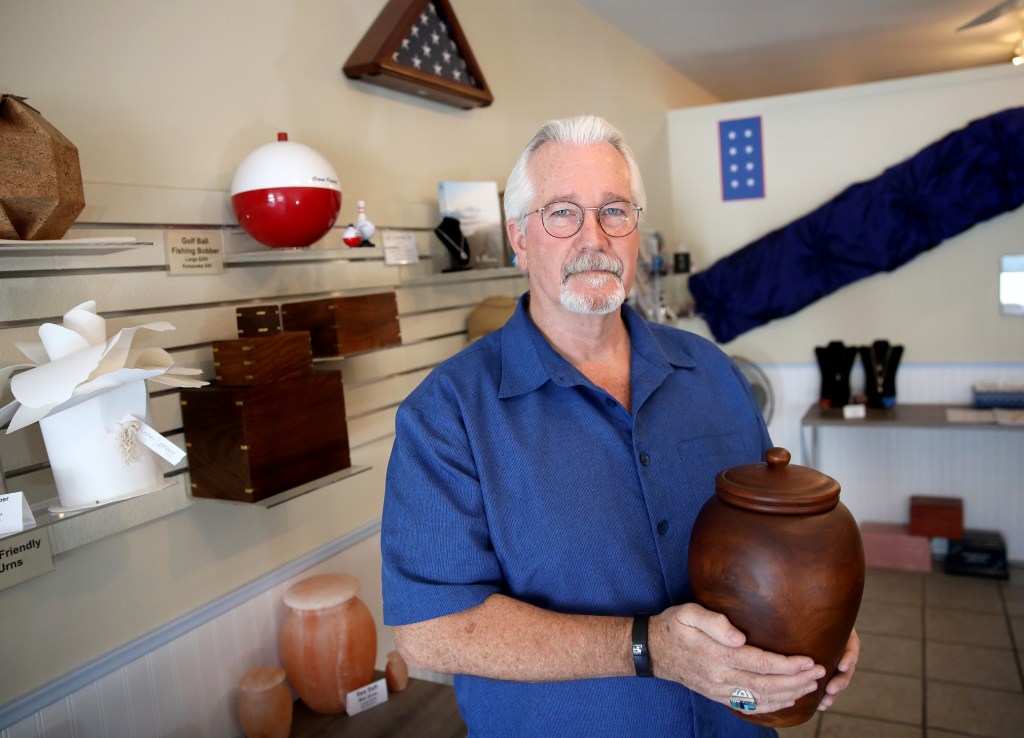Dan Flynn shows me around Simply Remembered Cremation Care, his small shop on Calle Laureles Street, with the enthusiasm of a craftsman. At first, this struck me as strange. Who gets this excited about ways to die?
But over the course of our conversation, Flynn displayed a passion for helping people honor their loved ones in a way that’s sincere and very touching. “What we want to do here is give people a way to say goodbye to their loved ones in a way that’s personal and honors their memory,” he explained.
Flynn walked me through the fascinating modern history of how we commemorate the dead and the cultural and historical events that have combined to give us the process we have today. Up until relatively recently, the options for the disposition of a loved one were fairly limited. Religious norms meant that cremation was a rarity, and funerals were mostly the realm of families, who took care of the corpses and set up burial ceremonies themselves.
That all changed with a few key historical events. Embalming became popular after the death of Abraham Lincoln. “They took his body on a tour by train to his final resting place, and it kind of kicked off this embalming craze because it was the first celebrity embalming,” said Flynn.
The next big event was the outbreak of Spanish influenza in 1918, an epidemic that led to the death of 675,000 Americans. “Traditionally, families took care of preparing the bodies, setting up funerals, etcetera,” said Flynn. “But now we have this horrific disease, and families simply don’t have the capacity to prepare funerals when several members of their family might be passing away in one month.”
The process of preparing bodies and setting up funeral resources became professionalized, outsourced to private enterprises and out of the hands of families. Thus was born the modern funeral industry.
But this came with a catch. “It’s nice that a lot of the process is now handled by someone else, but the flip side of that is families are no longer intimately involved with this process of preparing a loved one’s final goodbye,” explained Flynn. “So there’s not as much closure.”
Cremation became popular with its acceptance by the Catholic Church in 1963, and that opened new doors for families who wanted to make the final goodbye more personal. “With cremation, there are just endless ways that you can personalize things and connect this final goodbye to something special you shared with a loved one,” said Flynn.
Today, the personalization possibilities are “nearly endless,” explained Flynn. “If you’re artistic, your ash can be incorporated into a piece of glass-blown art. If you’re environmental, you can opt for a bio urn that will lead to the planting of a tree. We can even incorporate ashes into an item that has special sentiment to a family. One family had their father’s ashes integrated into his favorite fishing tackle box,” said Flynn. “What we want to do here is give people a way to make this a process that’s personal, so that families can have a sense of closure.”
See simplyremembered.com.

